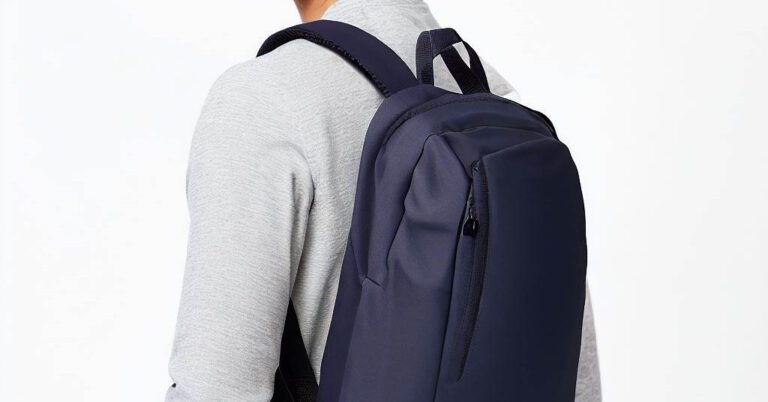The Shocking Truth Revealed: The Secret Materials Behind Backpack Straps! (August 2023)
What Material Are Backpack Straps Made Of?
Introduction
Backpacks have become an essential accessory for many individuals, whether for daily commutes, outdoor adventures, or travel purposes. While the design and functionality of backpacks vary, one crucial component that directly affects their comfort and durability is the straps. In this blog post, we will delve into what are backpack straps made of, the materials commonly used in backpack straps, exploring their characteristics, advantages, and impact on performance. By understanding the different strap materials available, readers will be better equipped to make informed choices when selecting a backpack that meets their needs.
II. Nylon Straps
Nylon is a widely used material in the manufacturing of backpack straps due to its exceptional durability and strength. Nylon straps offer several advantages that make them popular among backpack manufacturers and users alike.
Nylon straps:
- Are highly resistant to wear and tear, ensuring long-lasting performance.
- Provide excellent tensile strength, allowing them to withstand heavy loads without compromising stability.
- Exhibit water resistance, making them suitable for outdoor activities or environments with high humidity.
- Can be woven into various patterns, providing flexibility and adjustability for comfortable wear.
Backpack straps are commonly made from durable materials to provide comfort and support while carrying the bag. The most common materials used for backpack straps include nylon, polyester, and padded foam. Nylon and polyester offer strength and resistance to wear and tear, making them ideal for outdoor and everyday use. Padded foam straps provide additional comfort by reducing pressure on the shoulders. The choice of material may vary depending on the backpack’s intended use and design, but all aim to ensure a comfortable and reliable carrying experience.
— Backpack straps material
III. Polyester Straps
Polyester straps are another common choice for backpack manufacturers, offering their unique set of features and benefits. While polyester may not possess the same level of durability as nylon, it compensates with other desirable qualities.
Polyester straps:
- Have a high resistance to UV radiation, making them less prone to fading and degradation when exposed to sunlight.
- Are lightweight, contributing to overall weight reduction in the backpack.
- Provide excellent color retention, allowing for vibrant and visually appealing strap designs.
- Offer a soft and smooth texture, enhancing user comfort during extended wear
IV. Polypropylene Straps
Polypropylene straps, known for their lightweight and moisture resistance, find applications in backpacks where these properties are crucial. While they may not be as widely used as nylon or polyester, polypropylene straps have their own unique advantages.
Polypropylene straps:
- Are exceptionally lightweight, minimizing the overall weight burden of the backpack.
- Exhibit excellent resistance to moisture, making them suitable for water-related activities or environments.
- Retain their shape and do not stretch under heavy loads, ensuring stability and support.
- Offer a soft and comfortable feel against the wearer’s body.
Backpacks designed for water sports or outdoor activities in wet conditions often utilize polypropylene straps, providing users with reliable performance and enhanced comfort.
V. Webbing and Cordura Straps
Webbing and Cordura are two materials commonly used in backpack strap construction, offering exceptional strength and abrasion resistance. These materials contribute to the overall durability of the straps, ensuring they can withstand rigorous use and adverse conditions.
Webbing and Cordura straps:
- Consist of tightly woven fibers, resulting in excellent tensile strength and tear resistance.
- Are highly resistant to abrasion, preventing damage from rough surfaces or frequent contact.
- Offer enhanced stability and load-bearing capacity due to their structural integrity.
In backpacks intended for hiking, mountaineering, or heavy-duty usage, webbing and Cordura straps are often employed to ensure maximum durability and reliability.
VI. Foam Padding and Cushioning
Beyond the primary strap material, backpack straps often feature foam padding for increased comfort during extended wear. Foam padding serves as a cushioning layer between the strap and the wearer’s body, reducing pressure points and minimizing discomfort.
Different types of foam are used for padding backpack straps, including:
- Memory foam: Adapts to the wearer’s body shape and provides personalized comfort.
- EVA foam: Offers excellent shock absorption and cushioning properties.
- Closed-cell foam: Resistant to moisture absorption, making it suitable for outdoor activities.
By incorporating foam padding into the strap design, backpack manufacturers prioritize user comfort, particularly when the backpack is loaded with heavy items or worn for extended periods.
VII. Hybrid Strap Materials
To optimize performance and combine the strengths of different materials, some backpacks employ hybrid strap systems. These systems incorporate multiple materials in strategic areas to enhance comfort, durability, and functionality.
Hybrid strap materials:
- Utilize nylon, polyester, polypropylene, webbing, Cordura, or other materials in specific sections of the strap.
- Provide a balance of properties such as strength, flexibility, moisture resistance, and abrasion resistance.
- Enable backpack manufacturers to tailor the strap design to meet specific requirements.
Brands like UVW Adventure and HIJ Travel Gear are known for their innovative use of hybrid strap materials, showcasing their dedication to providing superior performance and user experience.
VIII. Conclusion
Backpack straps play a vital role in ensuring comfort, stability, and durability while carrying loads. Understanding the materials used in backpack straps allows individuals to make informed choices when selecting a backpack that suits their needs.
In this blog post, we explored various strap materials such as nylon, polyester, polypropylene, webbing, Cordura, and foam padding. Each material offers distinct advantages and is suitable for specific applications. Whether it’s the durability of nylon, the lightweight nature of polyester, the moisture resistance of polypropylene, the strength of webbing and Cordura, or the comfort provided by foam padding, backpack strap materials contribute significantly to the overall performance of a backpack.
Next time you’re in the market for a new backpack, remember to consider the strap materials and their characteristics. By choosing a backpack with suitable strap materials, you’ll ensure a comfortable and durable companion for your adventures.
FAQs
Q1: Are backpack straps adjustable?
A1: Yes, most backpack straps are adjustable, allowing users to customize the fit according to their preferences and body shape.
Q2: Can backpack straps be replaced?
A2: In many cases, backpack straps can be replaced if they become damaged or worn out. Check with the manufacturer or a professional repair service for options.
Q3: Do all backpacks have foam padding in the straps?
A3: No, not all backpacks have foam padding in the straps. The presence of foam padding varies depending on the backpack’s intended use, design, and manufacturer.
Q4: Can I wash backpack straps?
A4: It depends on the material and the care instructions provided by the manufacturer. Some straps can be washed by hand or in a washing machine, while others may require spot cleaning.
Q5: Can I use backpack straps for other purposes?
A5: While backpack straps are designed for carrying backpacks, creative individuals have found alternative uses for them, such as securing gear, making improvised handles, or creating DIY projects.







